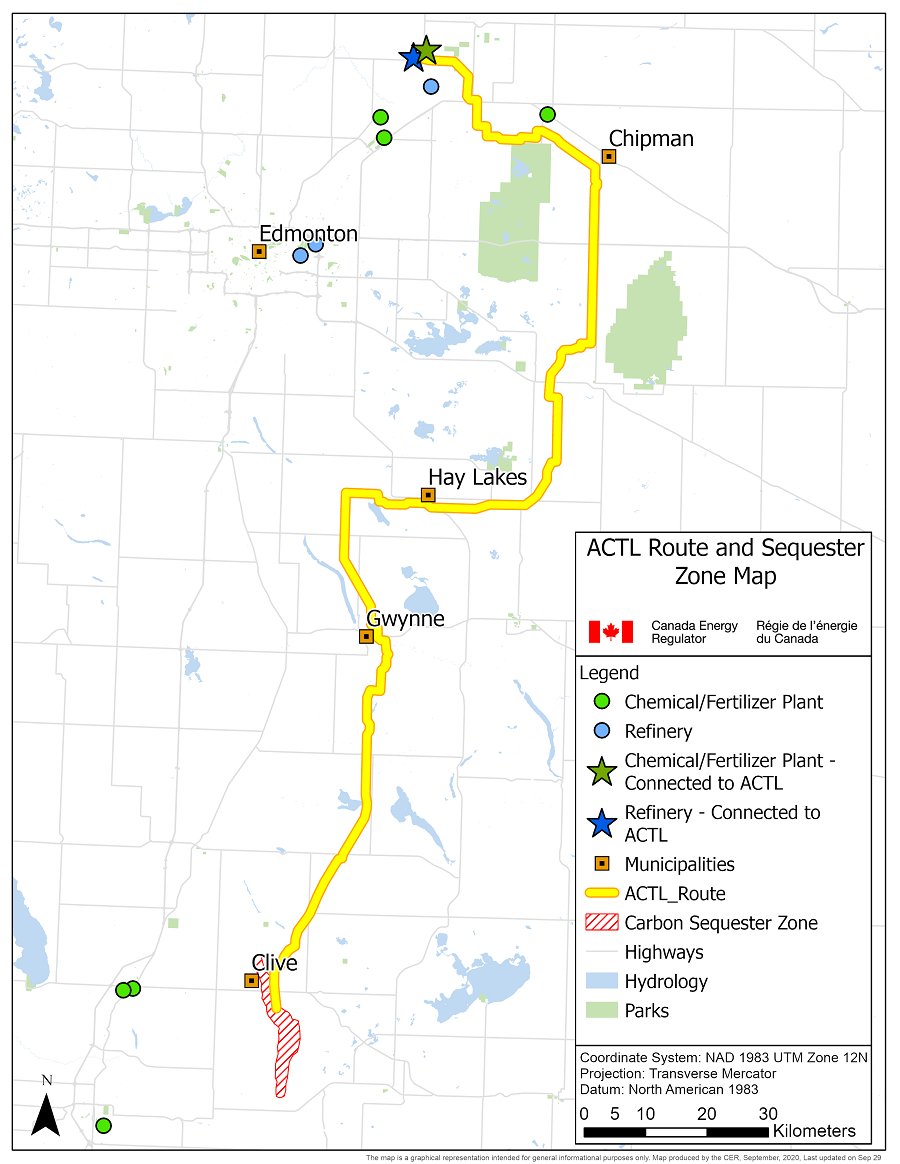Market Snapshot: CCS in Alberta and Saskatchewan – long-term storage capacity and the potential to lower industrial sector emissions intensity
Connect/Contact Us
Please send comments, questions, or suggestions for Market Snapshot topics to snapshots@cer-rec.gc.ca
Release date: 2020-10-07
Carbon capture and storage (CCS) is likely to play an important role in decreasing industrial sector emissions intensity. CCS works by capturing carbon emissions made by the consumption of fossil fuels, or by carbon emitted during the production of hydrogen. The International Energy Agency (IEA) estimates that CCS could provide 24% of the necessary global industrial sector emissions reductions needed to meet Paris Agreement targets.
In Canada, Saskatchewan and Alberta are at the forefront of CCS development and adoption, and are recognized internationally for CCS advancements. Saskatchewan’s Boundary Dam was one of the first large scale coal-fired CCS plants in the world, and its Shand test facility has made significant contributions to the international CCS industry.
Alberta’s Alberta Carbon Trunk Line (ACTL) is one of the world’s newest and largest CCS projects, and will sequester up to 1.8 megatons (MT) of CO2 per year from the Sturgeon Refinery, and Nutrien’s Redwater Fertilizer plant. This accounts for only 12% of the ACTL total capacity, which is 14.6 MT per year. For perspective, 2018 total emissions from Alberta’s refinery, and chemical and fertilizer sectors was 14.7 MT. The ACTL is capable of accessing 2 000 MT of cumulative CO2 storage.
Figure 1. Alberta Carbon Trunk Line Route

Source and Description
Source: Alberta Carbon Trunk Line, CER
Description: The map displays the route of the Alberta Carbon Trunk Line. The Alberta Carbon Trunk Link connects the Sturgeon Refinery, and Nutrien’s Redwater Fertilizer plant, to the region where the carbon is sequestered. The map also highlights the petroleum refineries, and chemical and fertilizer plants, that are close but not connected, to the Alberta Carbon Trunk Line.
A key factor facilitating current CCS adoption, and the potential for new CCS projects in Alberta and Saskatchewan, is world-leading carbon storage capacities. Together, Alberta and Saskatchewan have an estimated 190 000 to 640 000 MT of CO2 storage capacity; roughly 9% of the estimated North American onshore CCS capacity. In 2018, the Alberta and Saskatchewan industrial sectors together, (including power generation) emitted roughly 250 MT of CO2. Most of Alberta and Saskatchewan’s estimated storage capacity is in saline formations, rather than oil and gas, or coal reservoirs.
The storage potential in these two provinces is significant, however, the wide range of estimates for Alberta and Saskatchewan highlights the uncertainties remaining for future CCS projects; for example: storage site location and accessibility, long-term economic viability, type of storage, pressure toleration in the formations, future technology, costs, and policy trends.
- Date modified:
